In January 2025, Nvidia took center stage at the Consumer Electronics Show (CES) too unveil its latest advancements in artificial intelligence, gaming technology, and more. Known for its pioneering contributions to the fields of graphics processing and AI, the company showcased a series of innovative products and technologies designed to enhance user experiences across various sectors. This year’s presentation highlighted Nvidia’s commitment to pushing the boundaries of computational power, with a focus on how these developments can revolutionize industries ranging from gaming to healthcare. as the tech world converges at CES, Nvidia’s showcase stands as a pivotal moment in the ongoing dialog about the future of AI and its integration into everyday life.
Table of Contents
- Nvidias Vision for the Future of AI at CES 2025
- Key Innovations in Gaming Technology Unveiled by Nvidia
- The Impact of AI on Real-Time Gaming Performance
- Next-Generation Graphics Solutions Presented by Nvidia
- Enhancements in AI-Driven Content Creation Tools
- Exploring Nvidias Partnerships with Game Developers
- Sustainability Initiatives in Nvidias AI and Gaming Strategies
- Nvidias Role in Advancing Machine Learning Applications
- Emerging Trends in AI Research Highlighted at the Showcase
- user Experience Enhancements Through AI Integration
- Recommendations for Gamers: Leveraging New Nvidia Technologies
- Predictions for Industry Trends post-CES 2025
- Adapting to the evolution of AI: What Developers Should Know
- Consumer Reception and Feedback on Nvidias Innovations
- Future Implications of Nvidias Showcased Technologies in Various Industries
- Q&A
- The Conclusion
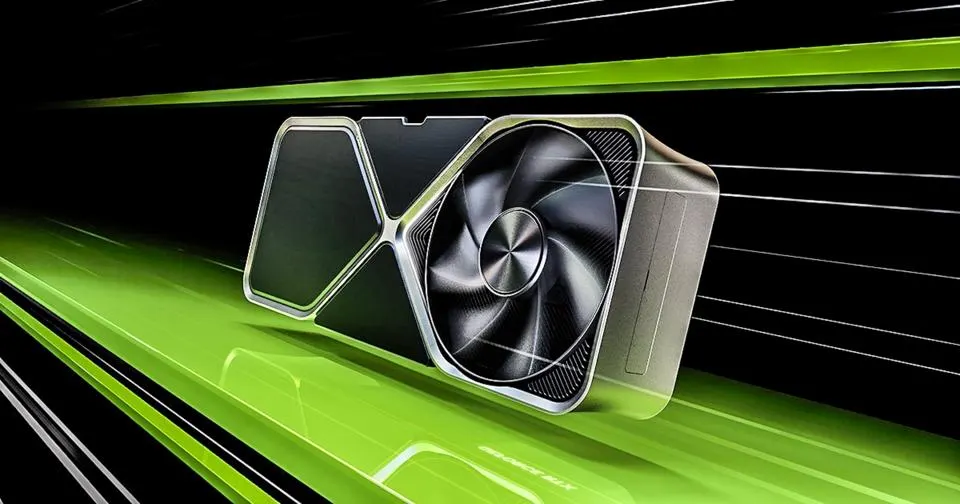
Nvidias Vision for the Future of AI at CES 2025
Nvidia is setting the stage for an AI-driven future like no other, revealing immense potential for transformative applications across multiple sectors. At CES 2025, the tech giant introduced groundbreaking advancements that not onyl enhance gaming experiences but also redefine how industries harness AI technology.Their Neural Performance Engine,which optimizes real-time rendering and enhances machine learning algorithms,promises to revolutionize interactive entertainment. Imagine playing your favorite games where every NPC (non-player character) learns from your interactions, creating a truly immersive experience. This innovation is a subtle invitation for developers to rethink gameplay mechanics and narratives, and I can’t help but draw parallels to early blockchain implementations that sought to disrupt customary markets by introducing decentralized systems. The past few years have shown that once people embrace a game-changing technology, an entire ecosystem flourishes around it, from smart contracts to NFT marketplaces.
On a broader scale, Nvidia’s AI vision extends to critical fields like healthcare, autonomous driving, and environmental sustainability, making their impact far-reaching and multifaceted. By showcasing their OmniAI platform, they illustrated how machine learning could analyze massive datasets to predict and respond to healthcare crises, possibly saving lives in the process. The real kicker? Such technologies could democratize access to critical insights, akin to how cryptocurrencies have opened financial systems to the unbanked. As we weave through this technological renaissance, it’s important to remember that every innovation, from blockchain to AI, echoes the challenges and triumphs of its predecessors. It’s not merely about improved graphics or gameplay; it’s about how these advancements will shape our day-to-day lives and push us toward a smarter, more connected future. At CES, Nvidia didn’t just showcase technology; they proposed a vision—a framework for integrating AI into the fabric of society, one that resonates with the driving philosophy of the crypto movement: decentralization and empowerment.
Key Innovations in Gaming Technology Unveiled by Nvidia
Nvidia’s latest showcase introduced a suite of groundbreaking technologies that are reshaping the landscape of gaming. At the heart of these innovations is DLSS 4.0 (Deep Learning Super Sampling), which enhances visual fidelity while substantially boosting frame rates.imagine being able to play your favorite graphics-intensive games at ultra settings on mid-tier hardware—this is no longer a fantasy, thanks to the power of AI-driven upscaling. Additionally, Nvidia Reflex has received enhancements that can reduce latency to split seconds, ensuring that every click and movement feels instant. This is a game-changer for competitive gaming, where milliseconds can determine victory or defeat. The reality is that gamers now have more tools at their disposal that not only elevate their experience but also democratize access to high-performance gaming technology.
Moreover, the unveiling of Omniverse XR is poised to redefine how gamers interact with their virtual environments. Picture this: an expansive digital realm where players can construct their own games,seamlessly blend augmented reality with traditional gameplay,and even engage in real-time co-creation with others from across the globe. This isn’t just a technical accomplishment; it’s a cultural shift in how we perceive gaming. The real-world request of these technologies extends further, paving the way for creativity and collaboration, not just in gaming but across industries. Whether it’s training simulations for professionals or immersive storytelling for artists, Nvidia is laying the groundwork for a future where imagination knows no bounds, fostering a richer, more interactive digital ecosystem that feels inherently human.
The Impact of AI on Real-Time Gaming Performance
Artificial Intelligence is no longer just a concept reserved for sci-fi novels; it’s dramatically reshaping the landscape of real-time gaming performance. At Nvidia’s CES 2025 presentation, we witnessed the introduction of DLSS (Deep Learning Super Sampling) 4.0,a game-changer that uses advanced algorithms to enhance framerates and image quality without jeopardizing performance. Imagine diving into your favorite battle royale game, the thrills of intense combat amplified by seamless graphics that adjust instantly to your gameplay style.With AI, the possibilities are endless, allowing for real-time adjustments based on player behavior, hardware capabilities, and game scenarios. This creates a more immersive experience that not only elevates individual player performance but also sets new standards for competitive gaming.
Moreover, the integration of AI technologies into game design has fostered a deeper connection between players and the digital world. With procedural generation enhanced by machine learning, environments are becoming more dynamic and reactive. Think about how blockchain technology revolutionized ownership and provenance in digital assets—AI is doing something similar for gameplay experiences. As an example,games utilizing these AI frameworks can dynamically adjust difficulty levels,ensuring that players of all skill levels feel challenged yet rewarded. This craft of personalized gameplay resonates with the ethos of decentralization in crypto, where each user’s journey is unique and tailored to their preferences, much like a custom algorithm that adjusts in real-time for the best possible experience. As we continue to watch these developments unfold, it’s clear that we are on the precipice of a new era in gaming, where AI and blockchain intertwine to redefine engagement and performance.
Next-Generation Graphics Solutions Presented by Nvidia
At CES 2025, Nvidia has unleashed a new wave of graphics solutions that promise to redefine our digital landscapes. The cutting-edge technology showcased during the event emphasizes not just enhanced performance but also the kind of immersive experiences that gamers and content creators have long dreamed of. With advances in real-time ray tracing and AI-driven rendering, Nvidia’s latest graphics cards, like the GeForce RTX 5000 series, aim to blur the lines between virtual and reality. It’s fascinating to see how this technology not only elevates gaming but also influences other fields such as digital art and architecture, where 3D visualizations can now be created in real-time with stunning accuracy.
What truly sets these solutions apart is Nvidia’s focus on AI integration. Imagine a scenario where your gaming experience adapts to your style,learning from your choices and behaviors to create a personalized journey. This level of customization moves beyond graphics; it embodies a shift in our interaction with technology.Just as blockchain revolutionizes trust and clarity in financial transactions, Nvidia’s innovations could transform digital content creation, making it more dynamic and responsive. A grate example of this is how AI can now generate complex environments with minimal input, which is reminiscent of how smart contracts automating transactions guide our interactions in the crypto space.As we stand on this precipice of digital evolution, it’s vital for both tech enthusiasts and casual users to grasp the implications; these advancements aren’t just about what’s next in gaming, but a glimpse into the future of immersive experiences across industries.
Enhancements in AI-Driven content Creation Tools
As we venture deeper into the realm of digital innovation, AI-driven content creation tools are experiencing unprecedented enhancements that have the potential to redefine how we communicate and engage with audiences. Nvidia’s latest showcase at CES 2025 introduced a suite of tools that leverage their advanced graphics processing capabilities, blending creativity with technology. Imagine AI algorithms capable of understanding context and nuance, generating content that not only captivates readers but also tailors itself dynamically based on user preferences. This means writers and marketers can now produce personalized narratives at scale,leading to more effective engagement. The tools are designed not just for efficiency but to coax out the unique voice of the creator, ensuring that the human touch remains intact amid the automation revolution.
Moreover, these AI enhancements are notably transformative in sectors like cryptocurrency and finance, where clarity and precision are paramount. Think about it: a complex subject like blockchain can often leave newcomers scratching their heads, overwhelmed by jargon. With AI contributing to content creation, we can see a future where tailored educational materials are instantly generated, catering specifically to the knowledge level of the reader. For instance, an AI tool might produce an explainer that breaks down DeFi concepts for novices while offering in-depth analyses for seasoned analysts—all in real time. here’s a glimpse of what these smart tools can offer:
| Feature | Description |
|---|---|
| Personalization | Content adapts based on user preferences and prior interactions. |
| Efficiency | AI can generate articles within minutes, significantly reducing turnaround time. |
| Quality Control | Adaptive algorithms ensure the quality of writing and coherence. |
| Interactive Content | engagement through interactive storytelling, such as quizzes and polls. |
This integration of AI in content creation not only enriches the narrative structure but also aligns with broader trends in user engagement across digital platforms. As we adapt to an era where creators are considered digital pioneers, the evolution of these AI tools marks a notable step toward a more informed, interactive, and engaging ecosystem. The implications for fields like finance and crypto are especially profound; we’re not just automating writing tasks—we’re fundamentally enhancing how information is shared and understood in our increasingly digital world.
Exploring Nvidias Partnerships with Game Developers
Nvidia’s commitment to enhancing gaming experiences through strategic collaborations with game developers is not just about graphics; it’s about creating immersive worlds that leverage cutting-edge technology. With partnerships spanning industry leaders like ubisoft, Epic Games, and CD Projekt Red, Nvidia is transforming the potential of real-time rendering and AI-driven gameplay. For example, the integration of the AI-enhanced DLSS (Deep Learning Super Sampling) technology into titles such as Cyberpunk 2077 demonstrates how computational power can drastically improve player experiences. Imagine a world where gamers can dynamically adjust settings in real time, achieving stunning visuals without compromising performance—this is the future that Nvidia and its partners are crafting together.
Diving deeper into these collaborations, it’s fascinating to see how they’re shaping the gaming landscape. As an example, the partnership with Unity Technologies is paving the way for smaller developers to harness these powerful tools, thereby democratizing game progress. This shift allows indie creators to create visually captivating games previously limited to large studios. Additionally, the seamless integration of blockchain technology in some games is opening new avenues for player ownership and monetization, a topic that’s becoming more pertinent in the gaming community.Through these partnerships, Nvidia is not just enhancing graphics; it is revolutionizing how players interact with digital worlds, making their engagement deeper and more meaningful.
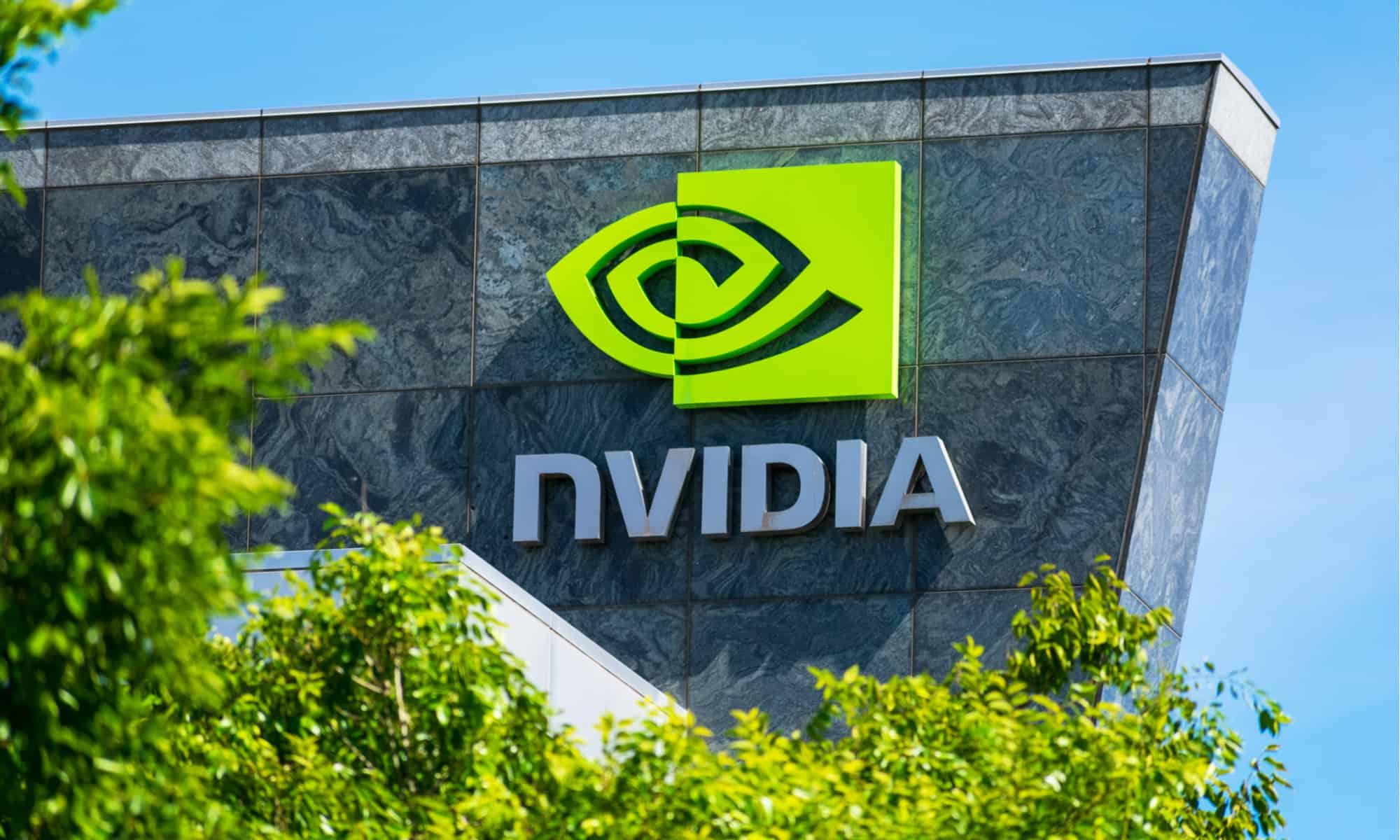
Sustainability Initiatives in Nvidias AI and Gaming Strategies
At CES 2025,Nvidia is showcasing a suite of sustainability initiatives that reflect its commitment to eco-kind innovation in the realms of artificial intelligence and gaming. These initiatives are not just a green facade; they are integral to the company’s long-term strategy and resonate deeply with both gamers and tech enthusiasts. By leveraging energy-efficient AI models and promoting sustainable gaming technologies, Nvidia is setting a new standard for corporate responsibility. Such strategies include shifting towards renewable energy sources for their data centers, significantly reducing carbon footprints, and partnering with game developers to implement efficient rendering techniques that lower energy consumption without sacrificing quality.
Nvidia’s approach goes beyond mere efficiency; it also emphasizes community engagement and education. Through initiatives like the Nvidia Green Gaming Challenge, players are encouraged to modify gaming behaviors that reduce energy use, fostering a deeper understanding of environmental impacts. The importance of these moves cannot be overstated, especially when considering that the gaming industry has faced scrutiny for its ecological footprint. By empowering users with the right tools and knowledge, Nvidia’s initiatives cultivate a sense of shared responsibility while promoting a more sustainable future. Gamers now have a genuine stake in this evolution, as a more eco-conscious gaming environment can enhance their overall experience and make a tangible difference on a larger scale.
| Initiative | Description | Impact |
|---|---|---|
| Energy-Efficient AI Models | Development of algorithms that minimize processing power | Reduces energy use in data centers |
| renewable Energy Commitment | Transitioning data centers to renewable energy sources | Drastically lowers carbon emissions |
| Green Gaming Challenge | Encourages gamers to adopt energy-saving practices | Increases awareness and collective action |
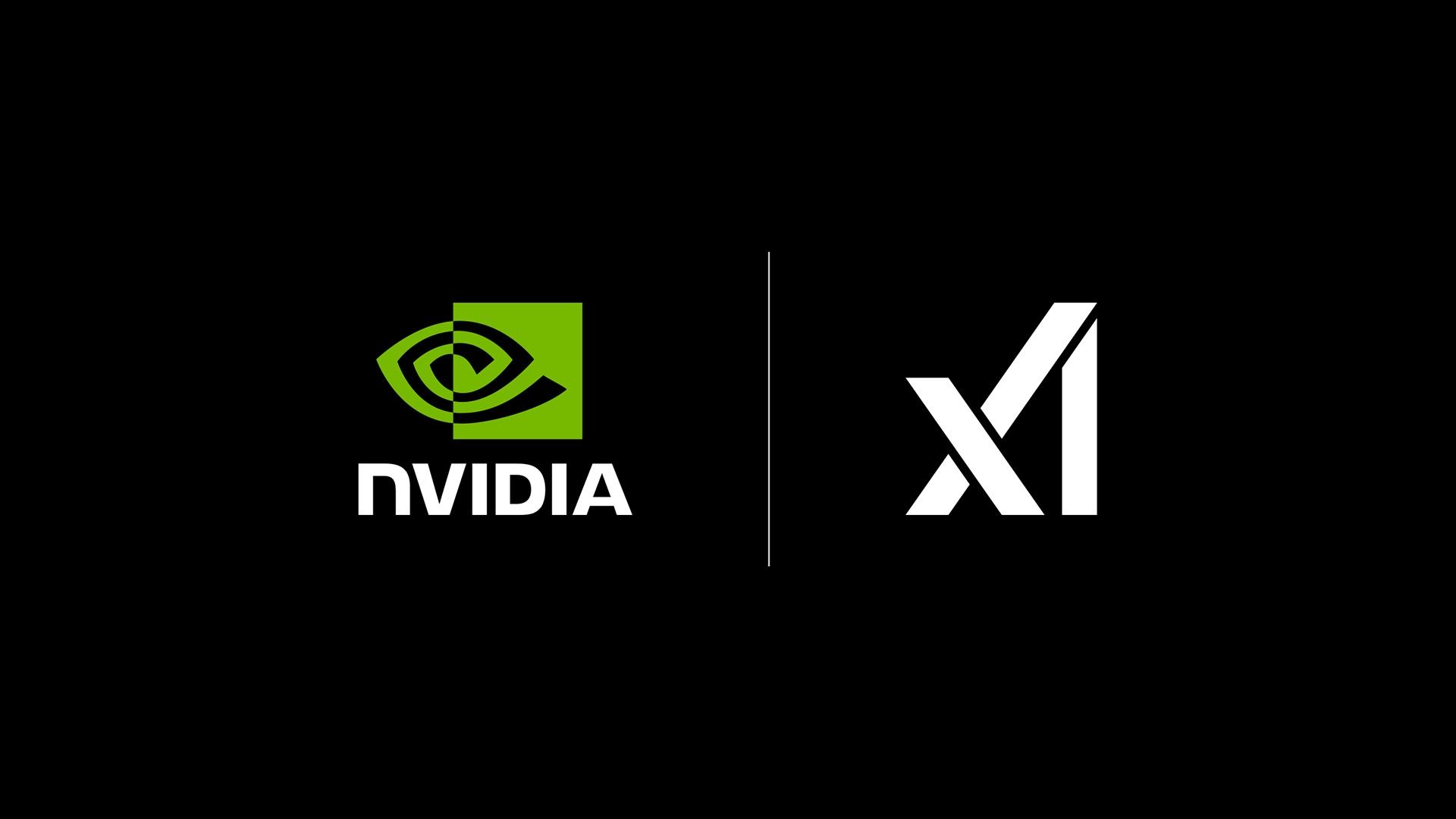
Nvidias Role in Advancing machine Learning Applications
Nvidia continues to occupy a pivotal position in the realm of machine learning, shaping applications across numerous industries with its innovative GPU technology. At CES 2025, the company’s latest advancements showcased a leap not just in computational power but also in the intelligence behind AI. With their new architecture, Nvidia has managed to cut down processing times for complex models significantly, enabling real-time inference in sectors ranging from healthcare to autonomous driving.The implications are staggering: imagine AI systems capable of analyzing medical data and providing instant diagnoses, or optimizing traffic flows in real time to reduce congestion and enhance road safety. This is more than just theoretical; it’s the foundation for smarter cities and healthier populations.
The true strength of Nvidia’s contribution lies in its impact on the accessibility of machine learning technologies. By making powerful tools available to a broader range of developers and researchers, Nvidia fosters an environment ripe for innovation. This democratization means that even small startups can harness cutting-edge AI capabilities, leveling the playing field and sparking creative solutions that we’ve yet to fully envision.Notably, the shift toward model-driven architectures, enabled by Nvidia’s GPUs, has led to the emergence of browsing assistants and customer service bots that can converse in a way that feels remarkably human.In this ecosystem, collaboration and shared knowledge become paramount, forming a vibrant community that pushes boundaries—an exciting prospect for anyone interested in the future of technology.
Emerging Trends in AI Research Highlighted at the Showcase
At Nvidia’s CES 2025 showcase, the spotlight shone bright on the latest advancements in AI research, revealing a tapestry woven with innovation and relevance to both the gaming realm and broader societal applications. Among the projects that caught my eye was the development of self-improving algorithms, designed to enhance their effectiveness over time without explicit human input. This echoes the evolution we’ve witnessed in blockchain technologies, where the network’s adaptability is key.The implication here is profound; much like how smart contracts execute autonomously, these AI models could fundamentally shift how we perceive automation across various industries. Imagine AI systems capable of diagnosing medical conditions with an ever-improving accuracy that rivals skilled human experts—this isn’t just theoretical; it’s emerging fact.
Further enriching this narrative were discussions around multimodal AI—systems that integrate various forms of data, such as text, images, and sound, to provide more holistic insights. Such as, I witnessed a compelling demonstration of a creative assistant capable of generating visual art based on textual prompts. This reminded me of the early days of cryptocurrency, where community-driven projects emerged from a synergy of ideas and innovation. The potential uses for multimodal AI resonate deeply with the ethos of decentralized platforms: creativity, collaboration, and community influence. Organizers showcased this technology’s adaptability to diverse sectors, ranging from education to entertainment, solidifying a belief that AI’s impact will be omni-directional, mirroring the decentralized ethos of blockchain. This symbiosis between AI advancement and sectors like finance and art is paving the way for a new paradigm where human and machine collaboration might redefine our creative and transactional landscapes.
User Experience Enhancements Through AI Integration
At CES 2025, Nvidia unveiled some remarkable advancements in user experience through AI integration, fundamentally transforming how gamers and content creators interact with technology. The company’s latest generative AI models enable hyper-personalized experiences,adjusting in real time to user preferences and behaviors. Imagine a gaming environment that recognizes your play style and adapts to provide just the right level of challenge or a virtual assistant that learns your shortcuts and preferences, propelling efficiency to new heights. This level of customization not only enhances immersion but also fosters a sense of ownership in digital spaces. As a frequent gamer myself, I’m particularly excited about the ability to customize narratives and gameplay in ways that felt unfeasible only a few years ago.
Moreover, the implications of this technology extend well beyond pixels on a screen. By leveraging AI, Nvidia is also addressing accessibility, creating tools that allow a wider range of users to engage with games and applications seamlessly. As a notable example, AI-driven subtitles and voice recognition facilitate inclusivity for those with hearing or speech impairments. As we dive deeper into these advancements,remember that each tweak and enhancement isn’t just about entertainment; it mirrors a shift in our broader digital interactions. In a world increasingly driven by blockchain and decentralized platforms, these technologies could empower creators to monetize their work directly, transforming the creator economy. The synergies between AI and blockchain are just beginning to be explored, and I can’t help but wonder how this will influence the very fabric of our digital lives.
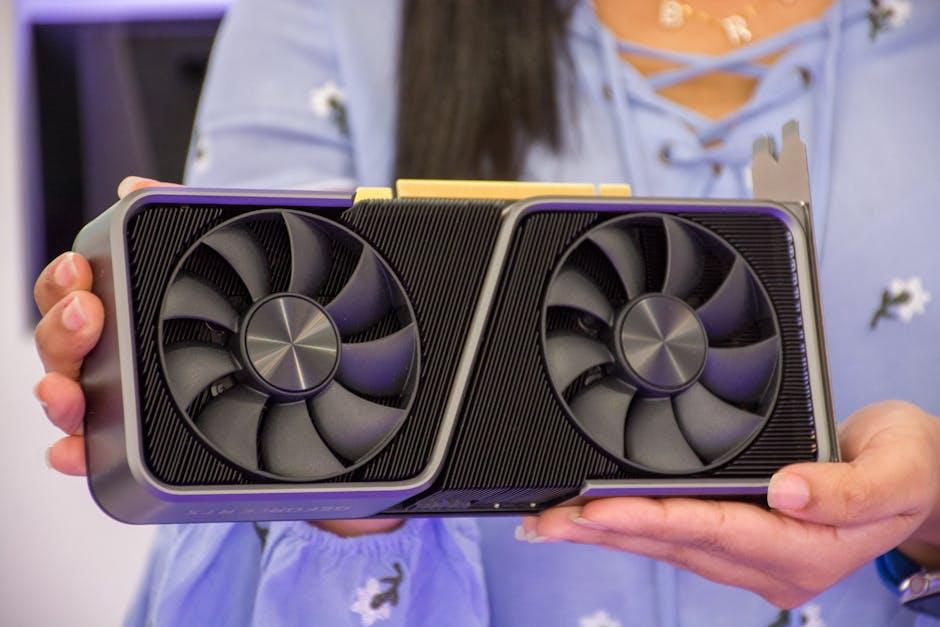
Recommendations for Gamers: Leveraging New Nvidia Technologies
Nvidia’s latest advancements not only signal a leap forward in graphical fidelity but also promise to enhance the overall gaming experience through real-time AI integration. For gamers looking to leverage these technologies, there are several strategies to consider:
- Upgrade Your Hardware: To fully utilize Nvidia’s cutting-edge features like DLSS 3.5 and real-time ray tracing,ensure your setup includes a compatible GPU. Upgrading to the latest RTX series will not only make your games look stunning but also increase frame rates and responsiveness.
- Explore New Titles: Keep an eye out for upcoming releases that will make the most of these technologies. Games designed with Nvidia’s tools in mind, like the upcoming “Project X,” will offer immersive experiences that are tough to replicate without these advancements.
- Utilize Game-Ready Drivers: Regularly update your drivers to ensure optimal performance and compatibility with new game titles. Nvidia often releases patches that improve performance metrics and unlock new features around major game launches.
- Join the Community: Engaging with online forums or groups focused on Nvidia technology can provide insights and tips from fellow gamers. Platforms like Reddit or Discord often have dedicated channels discussing the best practices for maximizing your gaming setup with Nvidia’s latest offerings.
An engaging aspect of nvidia’s latest showcase is its commitment to the gaming community, offering support not just for high-end players but also for casual gamers. I recently interacted with a young gamer at a local eSports event who mentioned how technologies like nvidia Reflex helped him reduce latency and improve his gameplay dramatically. this resonates with the larger trend we see in the gaming world where reducing reaction time can mean the difference between victory and defeat. As these tools make their way into more accessible price points, expect to see a diversification in player skill levels as well.
| Technology | Impact on Gaming | Recommended For |
|---|---|---|
| DLSS 3.5 | Boosts frame rate while enhancing image quality | Competitive gamers |
| Ray Tracing | Realistic lighting and shadows | Visual fidelity enthusiasts |
| Nvidia Reflex | reduces input lag | all gamers for smoother gameplay |
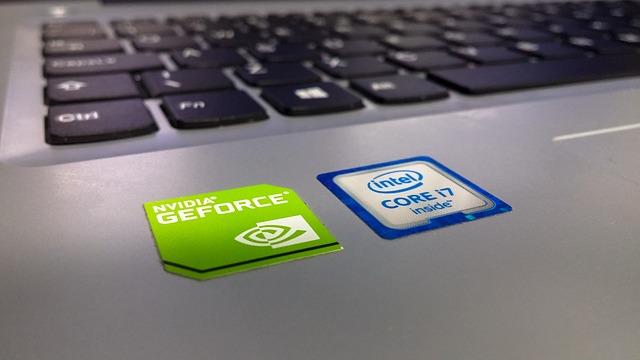
Predictions for Industry Trends Post-CES 2025
As we look beyond CES 2025, it becomes increasingly apparent that we are standing on the brink of significant shifts across multiple industries. With Nvidia’s latest breakthroughs,particularly in AI and gaming,there’s an unmistakable anticipation for what’s to come. The integration of AI tech into everyday applications will likely accelerate not just how we interact with devices, but also reshape the underlying infrastructure of digital platforms. AI algorithms are poised to enhance everything from personalized gaming experiences to real-time translations in communication tools, providing seamless interfaces that were once the stuff of futuristic dreams.
Additionally, blockchain technology’s role in this evolving landscape cannot be overstated.The convergence of AI and blockchain opens up a realm of possibilities, particularly regarding data security and decentralization. Imagine a world where your gaming achievements and personal data live securely on a blockchain,ensuring that each victory or unique item is verifiable and tradable with ownership that is inherently clear. This fusion could lead to entirely new business models in gaming, leveraging not just NFTs but also smart contracts that automate transaction processes. Just as we saw cryptocurrencies gain traction as modern-day gold, these innovations may well redefine the way we perceive ownership and value in the digital realm.
| Future Trends | Potential Impact |
|---|---|
| Increased AI Integration | Redefining user experiences through personalization. |
| Decentralized Gaming Platforms | Creating true ownership of in-game assets. |
| Secure Data Management | Enhancing user trust through blockchain technology. |
Adapting to the Evolution of AI: What Developers Should Know
as we stand on the precipice of a new wave in AI technology, developers must hone their skills to adapt to these rapid advancements, particularly in areas showcased at major events like Nvidia’s CES 2025. This isn’t merely about learning new programming languages or frameworks; it’s about understanding the core of what AI can achieve. Machine learning models are becoming more complex, with significant implications for everything from gaming to real-world applications in healthcare and education. Developers should be prepared to dive into the mechanics behind these models—grasping concepts like reinforcement learning and generative adversarial networks (GANs)—which are destined to be pivotal in crafting innovative solutions that carry societal value.
The evolving landscape is also shifting how we perceive collaboration between humans and machines. One fascinating trend is the synergy between blockchain technology and AI, which can create unparalleled opportunities. Developers should consider how smart contracts and decentralized applications (dApps) can be enhanced through AI, optimizing processes and ensuring security in transactions. Recently, I attended a panel where a leading AI researcher commented, “We’re approaching a future where personal privacy and democratized access to cutting-edge technology can coexist.” This resonated deeply with me, reinforcing the notion that as AI evolves, it’s essential for developers to balance innovation with ethics—keeping user privacy at the forefront of their work. To aid in this journey, consider creating or joining communities that focus on this intersection, where sharing knowledge can foster collective progress.
Consumer Reception and Feedback on Nvidias Innovations
Consumer reception of Nvidia’s latest innovations at CES 2025 has been strikingly positive, showcasing a blend of enthusiasm and intrigue regarding their advancements in AI and gaming technology. Many attendees expressed that the new graphics cards not only offer an exhilarating gaming experience but also actively contribute to advancements in AI, particularly in areas like machine learning and real-time data analysis. social media buzz highlighted comments such as, “The seamless interaction and breathtaking visuals were beyond anything I’ve experienced before!” This kind of feedback illustrates a strong connection between consumers’ gaming experiences and the innovative engineering behind these products, revealing a growing consumer expectation for immersive and responsive digital environments.
Moreover, many industry professionals have noted the potential implications of Nvidia’s AI tools for the broader technology landscape. A significant takeaway from the event was the recognition that Nvidia’s innovations are not solely about improving gaming but also about revolutionizing workflows across various sectors, such as healthcare, education, and finance. Users are keenly aware of how powerful graphics and processing capabilities can enhance everything from virtual reality training simulations to complex predictive models in finance. This is indicative of a broader trend—where consumer tech facilitates profound changes across industries. For instance, consider the rise of AI in automating tasks usually reserved for skilled labour; many professionals remarked, “This won’t just change how we game; it’s set to alter the entire landscape of work and creativity as we know it!” The intersection between gaming technology and practical applications is becoming a thrilling area of exploration as Nvidia continues to lead the charge.
Future Implications of Nvidias Showcased Technologies in Various Industries
Nvidia’s groundbreaking innovations showcased at CES 2025 signify a monumental shift across industries, propelling advancements in artificial intelligence that are set to reshape our everyday lives. Take, for instance, the emergence of Nvidia’s Quantum AI—a quantum-accelerated platform that promises to enhance computational capabilities exponentially. Imagine businesses in finance using this technology for real-time trading analytics. This not only speeds up decision-making but also introduces sophisticated predictive models that could revolutionize risk assessment. As someone who’s followed the intertwining paths of AI and finance, it’s exhilarating to think about how algorithms, fed with vast troves of real-time market data, could ephemeralize traditional trading approaches.If you’re deep into crypto trading, you can visualize the potential of AI-backed predictions guiding your investments, similar to how on-chain data visualizations help us make informed decisions today.
Beyond finance, the implications of Nvidia’s showcased technologies extend vividly into gaming and healthcare. With the unveiling of Omniverse— a collaborative platform enabling creators to build interactive simulations—developers can seamlessly integrate AI into gaming environments, crafting experiences that adapt and respond to player behaviors in unimaginable ways. This isn’t mere futuristic fiction; it’s tangible right at our fingertips. Think about how blockchain technology pairs beautifully with these advancements; not only can games be more immersive, but they can also incorporate revenue-sharing models based on blockchain transactions for digital assets. This convergence could redefine ownership in gaming, much like how we’re seeing the NFT boom unfold. as a journalist who witnesses these shifts firsthand, I can’t help but feel that we are at the brink of realizing the interconnectedness of technology in ways previously thoght impossible.
Q&A
Q&A: Nvidia’s CES 2025 Showcase – Revolutionizing AI, Gaming and beyond
Q: What were the main highlights of Nvidia’s CES 2025 showcase?
A: Nvidia’s CES 2025 showcase featured several groundbreaking advancements in artificial intelligence and gaming technology. Key highlights included the introduction of the new RTX 5000 series graphics cards,enhanced AI-driven gaming features,and significant upgrades to Nvidia’s AI platforms for industries like healthcare and autonomous vehicles.
Q: How do the new RTX 5000 series graphics cards differ from previous models?
A: The RTX 5000 series introduces improved ray tracing capabilities,higher frame rates,and enhanced energy efficiency compared to previous models. these graphics cards are designed to support the latest gaming technologies, including advanced AI-based rendering techniques and immersive graphics experiences.
Q: what AI advancements were presented during the showcase?
A: nvidia unveiled several AI advancements, including the new AI framework tailored for developers, which facilitates the creation of smarter, more responsive applications. Notable applications highlighted included real-time language translation, enhanced video editing capabilities, and AI-assisted content creation tools designed for gaming developers.
Q: How is nvidia addressing the gaming community’s needs?
A: Nvidia is focusing on delivering tools that enhance the gaming experience. This includes features like DLSS 4 (Deep Learning Super Sampling), which optimizes frame rates and image quality, and new software that allows game developers to incorporate AI-driven NPC behavior for more immersive gameplay.
Q: What industry applications were discussed apart from gaming?
A: Beyond gaming,Nvidia’s showcase emphasized AI applications in various sectors such as healthcare,where AI is being used for diagnostic purposes,and autonomous vehicles,where it contributes to safety and navigation systems. These advancements aim to streamline processes and improve outcomes in these critical industries.
Q: How has Nvidia positioned itself in the competitive landscape of AI technology?
A: Nvidia has reinforced its position as a leader in AI technology by continuously innovating its hardware and software offerings. The company’s strategic partnerships with industries, investment in research and development, and focus on AI integration across platforms solidify its competitive edge.Q: What is Nvidia’s vision for the future of AI and gaming?
A: Nvidia envisions a future where AI is seamlessly integrated into both gaming and various industries, providing enhanced user experiences and driving innovation. The company aims to explore opportunities in metaverse development, virtual reality, and machine learning applications that will shape the next generation of technology.
Q: Where can consumers find more information about Nvidia’s latest products and innovations?
A: Consumers can visit Nvidia’s official website and social media channels for detailed information about the RTX 5000 series, AI frameworks, and other products unveiled at CES 2025. Additionally, various tech news platforms will cover further insights and reviews following the showcase.
The Conclusion
Nvidia’s CES 2025 showcase has underscored the company’s commitment to advancing technology across multiple domains, including artificial intelligence and gaming. With a range of innovative products and initiatives, Nvidia is not only redefining the gaming landscape but also expanding the potential applications of AI in various industries. As these technologies continue to evolve, the implications for developers, gamers, and end-users could be profound. This year’s presentation illustrates Nvidia’s pivotal role in shaping the future of technology and highlights the importance of staying attuned to emerging trends that may redefine our digital experiences. The developments discussed at CES 2025 will likely influence the market for years to come,reinforcing Nvidia’s position as a leader in the tech industry.




